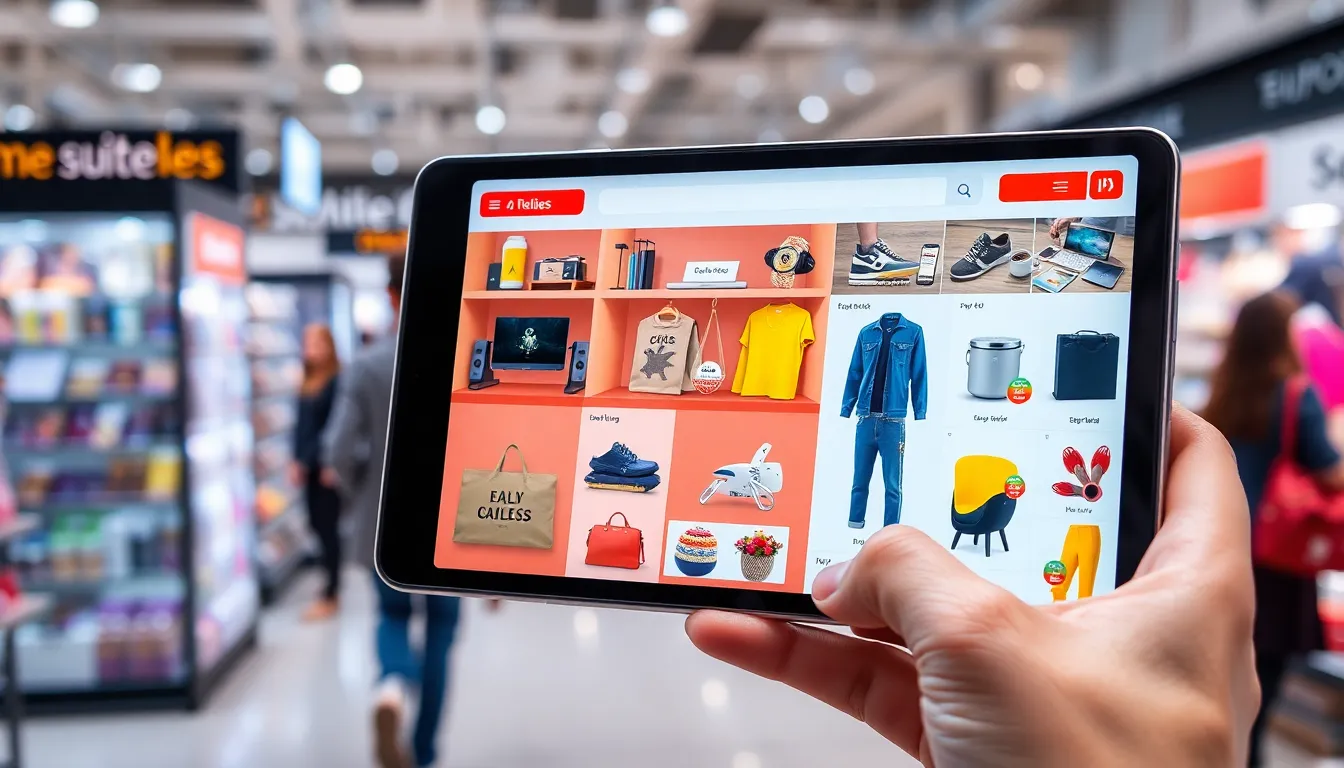In a world where shopping can feel like a sport, smart shopping ads are the MVPs of the retail game. These clever little gems not only grab attention but also make it easier than ever to find the best deals. Imagine strolling through the digital aisles, and suddenly, a perfectly tailored ad jumps out, saying, “Hey, you! Yes, you! Want to save some cash while looking fabulous?”
Table of Contents
ToggleOverview Of Smart Shopping Ads
Smart shopping ads streamline the advertising process for retailers. They utilize machine learning to promote products across various Google platforms, including Google Search and YouTube. These ads adjust in real-time based on user behavior and seasonal trends, targeting relevant audiences effectively.
Retailers benefit from simplified campaigns that automatically optimize bids and placements, enhancing overall return on investment. Setting up smart shopping ads requires only a few steps. Advertisers upload their product feed, define campaign goals, and let the algorithms take over.
Additionally, smart shopping ads include visually appealing elements like product images, prices, and promotional texts. These features capture consumer attention and drive higher click-through rates. Performance tracking is straightforward, allowing retailers to analyze metrics like conversion rates and cost per acquisition.
Ad placements occur across Google’s extensive network, increasing visibility among potential customers. Frequent insights into audience engagement help retailers refine strategies and improve advertising outcomes. They draw in consumers searching for specific products, thus boosting conversions through personalized experiences.
Incorporating smart shopping ads into a marketing strategy can significantly enhance competitiveness in today’s retail market. Customized messaging reaches users based on their previous interactions and preferences, yielding better engagement. As a result, retailers harness the power of advanced technology to connect with targeted audiences, ensuring effective promotion and increased sales.
Benefits Of Smart Shopping Ads

Smart shopping ads offer numerous advantages for retailers aiming to enhance their advertising effectiveness. These ads leverage advanced technology to optimize campaigns and engage consumers through targeted content.
Increased Reach
Smart shopping ads amplify visibility across Google’s extensive network. By displaying on various platforms like Google Search, YouTube, and Display Network, advertisers reach a broader audience. Retailers can showcase products to potential customers who may not yet visit their sites. With machine learning algorithms at play, these ads adapt to user interactions in real-time. This dynamic adjustment helps ensure products land in front of the right audiences at the right times. Targeting various demographics has never been easier, making smart shopping ads crucial for driving traffic and attracting new customers.
Improved Conversion Rates
Enhanced click-through rates stem from the visually engaging format of smart shopping ads. These advertisements incorporate attractive product images, compelling prices, and appealing promotional texts that capture consumer interest. Engaging visuals facilitate effective storytelling and create a stronger connection with potential buyers. When coupled with the automatic optimization of bidding strategies, retailers see a notable increase in conversion rates. Performance tracking also allows for ongoing adjustments, ensuring campaigns remain effective over time. By focusing on relevant user behavior, these ads guide users toward making informed purchasing decisions. With these strategies in place, retailers enjoy a significant boost in sales as customers take action with greater confidence.
Effective Smart Shopping Ad Examples
Smart shopping ads showcase innovative strategies that cater to consumer preferences. These ads exemplify how personalized marketing approaches enhance engagement and conversion rates.
Retail Industry
In the retail sector, notable examples include campaigns run by well-known brands such as Walmart and Target. Each retailer employs smart shopping ads to feature promotions and new arrivals, highlighting discounts on popular items. Effective targeting ensures these ads reach users interested in those specific categories. With compelling visuals and clear pricing, these ads grab attention, prompting potential customers to click through. Retailers leverage analytics to continually refine their strategies based on consumer interactions. The results often show improved foot traffic and increased online sales.
E-commerce Platforms
E-commerce platforms like Amazon and eBay utilize smart shopping ads to effectively promote diverse inventory. Each platform tailors ads to showcase products relevant to user search histories and shopping behaviors. Their ads typically include vibrant images and catchy descriptions that resonate with target audiences. By dynamically adjusting bids based on demand, these platforms increase ad visibility during peak shopping times. This responsiveness to user engagement contributes significantly to higher conversion rates. Both companies track performance metrics, allowing them to optimize campaigns, further enhancing ad effectiveness.
Best Practices For Creating Smart Shopping Ads
Creating effective smart shopping ads requires a strategic approach. Focus on high-quality product images, as visual appeal significantly impacts click-through rates. Ensure images are clear, well-lit, and showcase products from multiple angles.
Develop compelling promotional texts to capture user interest. Highlight key features, discounts, or limited-time offers, making the ads more enticing. Use concise language that communicates value quickly.
Target relevant audiences by utilizing Google’s machine learning capabilities. Define clear campaign goals and monitor performance to adjust targeting strategies based on user behavior and preferences.
Regularly update product feeds to maintain accuracy. Inaccurate inventory can lead to poor user experiences, decreasing trust and conversions. Timely updates reflect current availability and promotions.
Experiment with different ad formats. Some formats may resonate more with specific demographics or products. Track performance metrics to identify which combinations yield the highest results.
Optimize bids dynamically. Set automated bidding strategies that respond to real-time competition and user engagement, enhancing visibility during key shopping periods. Higher visibility leads to increased chances of conversion.
Encourage engagement with remarketing lists. Target previous visitors who showed interest in products but did not convert. Personalized ads remind these users of their interest, improving the likelihood of purchase.
Analyze key performance indicators such as conversion rates and cost per acquisition. Data-driven decisions help refine ad strategies and improve overall return on investment. Regular reviews of campaign performance ensure continuous improvement.
By incorporating these best practices, retailers can maximize the effectiveness of their smart shopping ads, driving traffic and boosting sales within a competitive retail landscape.
Smart shopping ads represent a crucial advancement in retail marketing. By harnessing machine learning and dynamic bidding strategies, these ads not only enhance visibility but also deliver personalized experiences to consumers. Retailers who adopt this technology can streamline their campaigns and optimize their return on investment.
With visually engaging formats and real-time adjustments, smart shopping ads effectively capture consumer attention and drive conversions. As the retail landscape continues to evolve, embracing innovative advertising solutions like smart shopping ads will be essential for staying competitive. Retailers that prioritize high-quality visuals and relevant targeting will likely see significant benefits in their overall sales performance.



